Discovolante's Best of 1974-1976 (Japan Edition)
A lot of repeating artists on these. Meh... guess it was a low point lol. From the beginning of the year to the end, via the Sputnik release calendar. |
| 1 |  | Magical Power Mako
Magical Power Mako
Magical Power Mako is a veteran in the avant-garde world that first broke out in 1974 with the release of his self-titled debut. It's an odd album that was lightyears ahead of its time in its daringness to brazenly tackle a dozen different styles over 12 tracks. |
| 2 | 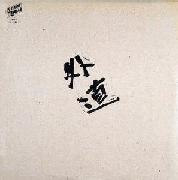 | Gedo
Gedo
Gedo was a groundbreaking hard rock band that was originally active for only 3 years, and released only two albums during those years. Kicking down the door in 1974 with their legendary debut, it's a piercingly loud rocker of an album that, along with their follow-up "Just Gedo", are some of the best hard rock albums in Japanese music history. |
| 3 |  | Off Course
Kono Michi wo Yukeba
Off Course's second album "Kono Michi wo Yukeba" is a nice fever dream of surrealistic psychedelic pop with strong folk overtones, specifically in the melodies in the vocals. A splendid follow-up to the near-perfect debut "Boku no Okurimono". |
| 4 |  | Yumi Matsutoya
Misslim
Yumi Matsutoya's "Misslim" took the folk-pop sound of her debut "Hikougi Gumo", and worked it to a perfection. The album has since been thought of as one of her best, with it including the jangly "Yasashisa ni Tsutsumareta Nara", which is one of her most popular songs. |
| 5 | 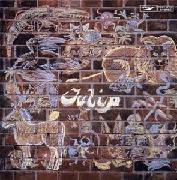 | Tulip
Boku ga Tsukutta Ai no Uta
Tulip released two albums after their stellar 1972 debut "Mahou no Kiiro Ikutsu" which paled in comparison to the debut's greatness. In late 1974, however, the group broke from their mediocre streak with the release of "Boku ga Tsukutta Ai no Uta". While it's not as upbeat and fun as "Mahou no Kiiro Ikutsu", "Boku ga..." ends up thriving as a complete opposite, while being nearly as great. |
| 6 |  | Sadistic Mika Band
Kurofune
Sadistic Mika Band's second album "Kurofune" catapulted the band to astronomical heights both sides of the waters, with the band playing a set on the legendary British show Old Grey Whistle Test. |
| 7 | 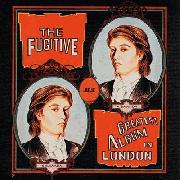 | Kenji Sawada
The Fugitive (Ai no Toubousha)
A rock opera with several different sounds and attitudes, "The Fugitive (Ai no Toubousha)", while far from being his strongest commercial success, ended up being regarded as one of his all time best efforts. |
| 8 | 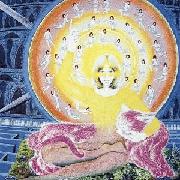 | Magical Power Mako
Super Record
Magical Power Mako reaches ultimate avant-garde/psychedelia victory with the release of his best album by far, the aptly titled "Super Record". While his self-titled album was more of a mix-and-match album that was seemingly odd for oddity sake, "Super Record" relishes in otherworldly offbeat experimental rhythms and freak folk melodies. And while "ahead-of-its-time" can be used for pretty much all of Magical Power Mako's 70s and early 80s releases, the term seems to apply far more here than any of his other albums. Something that sounds like it's from 20 years in the future of its actual release date. |
| 9 |  | Tulip
Mugen Kidou
"Mugen Kidou" is like a blend of "Mahou no Kiiro Ikutsu" and "Boku ga Tsukutta Ai no Uta", and is in a sense a nice mix of both different worlds. Further proof as to why Tulip were one of the best Japanese bands of the 70s. |
| 10 | 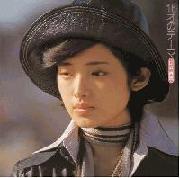 | Momoe Yamaguchi
16-sai no Teema
The impact of Momoe Yamaguchi on the Japanese pop world at large cannot be understated. Her legacy on the idol scene in practically unparalleled, although even I will admit her first five albums were not exactly up to par. The tides, however, changed in 1975 with the release of "16-sai no Teema", which cemented her position as it boasted one of her most popular singles, "Fuyu no Iro", which was the 10th best selling single of the year. The more mature sound of "16-sai..." works wonders for Momoe's vocal tone, and would ultimately pave the way for greener pastures. |
| 11 | 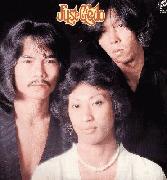 | Gedo
Just Gedo
Gedo's second (and final) album in their initial 3-year run, "Just Gedo", is pretty much like an extension pack of their debut. More of the same, but a great example of a musical version of the "if it ain't broke, don't fix it" concept. |
| 12 | 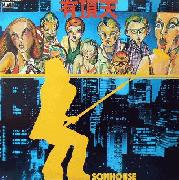 | Sonhouse
Uchoten
Sonhouse was basically the Japanese Stooges, having a snotty, low-budget sound which rocked the hell out. Their best moment by far was their debut "Uchoten", which is home to some of the best-rounded Japanese protopunk ever. |
| 13 | 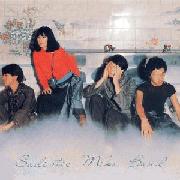 | Sadistic Mika Band
Hot! Menu
"Hot! Menu" failed to live up to the huge success of "Kurofune" and for quite a while was considered to be the bastard child of their three albums. Its more vast and experimental sound divided their fanbase in both Japan and Europe, although it has thankfully been reevaluated over the last few decades and seen as a bold and fantastic album on its own merit. |
| 14 | 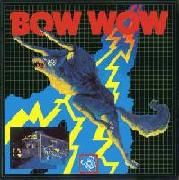 | BowWow (JPN)
Hoero! Bow Wow
BowWow were one of the earliest heavy metal bands in Japanese music history, and the group make history with the release of their 1976 magnum opus "Hoero! Bow Wow". Its heavy (for the time) sound was revolutionary in their home country as heavy metal was far from a household genre at the time. BowWow helped introduce a style which would become a highly popular genre in Japan about a decade after "Hoero!" was released. |
| 15 | 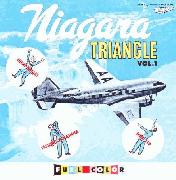 | Niagara Triangle
Niagara Triangle Vol. 1
Niagara Triangle was a session group of sorts that was spearheaded by brains (and consequently the only original member of the group in both of their albums) Eiichi Otaki. The group remain as popular today as ever, with their music even becoming known to some degree overseas decades later. Their first album is a sunshiny folk-pop album that is certainly a product of its time, but manages to charm throughout with its delightfully dated sound. |
| 16 |  | Kenji Sawada
Charcoal Gray no Shouzou
"Charcoal Gray no Shouzou" is another example of how great Kenji Sawada was at his prime and why he was one of the first kings of Japanese rock. His last really good album for years. |
| 17 |  | Yumi Matsutoya
14 Banme no Tsuki
"14 Banme no Tsuki" is much in the same vein as "Misslim" in the sense of having a heavy folk influence, although perhaps even more so. Beautifully dozy and warm, "14 Banme no Tsuki" has, also similarly to "Misslim", garnered a reputation over the years as being one of her all time best albums, and there is very little doubt as to why it has it upon listening. |
| 18 |  | Momoe Yamaguchi
Pearl Color ni Yurete
Momoe expanded upon her legacy some more with the release of her album "Pearl Color ni Yurete", which explored her still-developing mature sound deeper. Her signature velvety vocals mesh together swimmingly with the album's production, and it makes for another pop masterpiece. |
|
